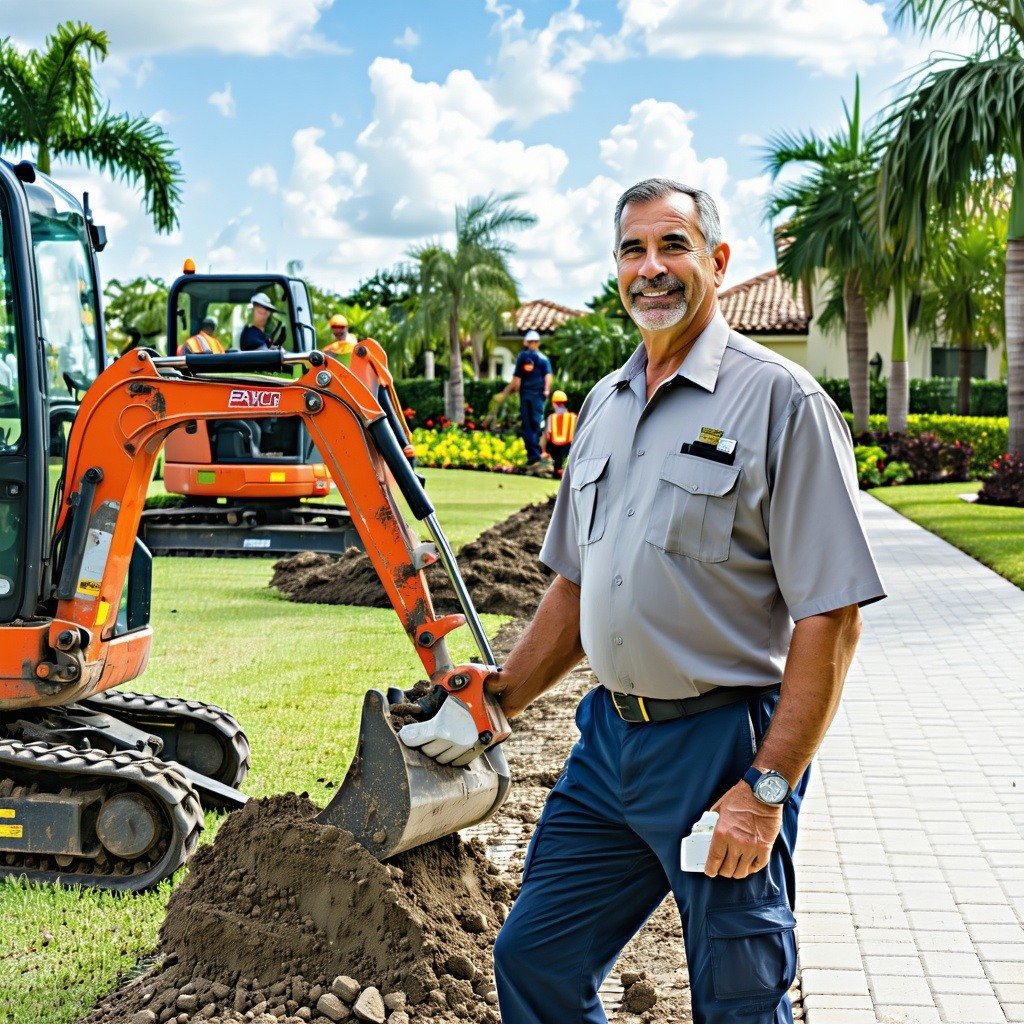
Planting palms in swale areas in South Florida can pose significant challenges and risks to your property landscape.
Understanding Swale Areas and Their Purpose
Swale areas are low-lying regions designed to manage water runoff, filter pollutants, and support local ecosystems. In South Florida, where heavy rainfall is common, swales play a crucial role in preventing floods and maintaining water quality.
These zones are often found between sidewalks and streets, making them high-traffic areas that require careful landscaping choices to ensure both functionality and aesthetic appeal.
Common Issues with Planting Palms in Swale Zones
Palms, though iconic symbols of tropical landscapes, are not always ideal for swale areas. Their root systems can be invasive, potentially damaging underground utilities and disrupting the soil structure designed to manage water runoff.
Additionally, palms in high-traffic swale zones can pose safety hazards. Falling fronds and debris can become obstructions, and their height can interfere with visibility for drivers and pedestrians.
Impact on Property Value and Curb Appeal
While palms can provide a lush, tropical look, their placement in swale areas can detract from your property’s overall curb appeal. Unkempt or poorly placed palms can make a property look neglected and reduce its market value.
Moreover, potential buyers may be wary of the maintenance and potential hazards associated with palms in swale zones, making your property less attractive in a competitive real estate market.
Alternatives to Palms for Swale Landscaping
Consider using native plants and shrubs that are well-suited to South Florida’s climate and swale conditions. Options like saw palmetto, dwarf firebush, muhly grass or small trees offer aesthetic appeal without the risks associated with palms.
These alternatives are not only easier to maintain but also contribute to the local ecosystem by providing habitats for native wildlife and supporting pollinators.
Tips for Maintaining Healthy Swale Landscapes
Regularly inspect and maintain your swale area to ensure it is functioning correctly. Remove debris, check for erosion, and prune plants as necessary to maintain clear pathways and visibility.
Utilize mulch to help retain moisture and control weeds, and consider consulting with a landscaping professional to develop a maintenance plan tailored to your specific swale area needs.
Subscribe Here!

.webp?width=200&height=55&name=Logo%20horizontal%2070-2%20(1).webp)